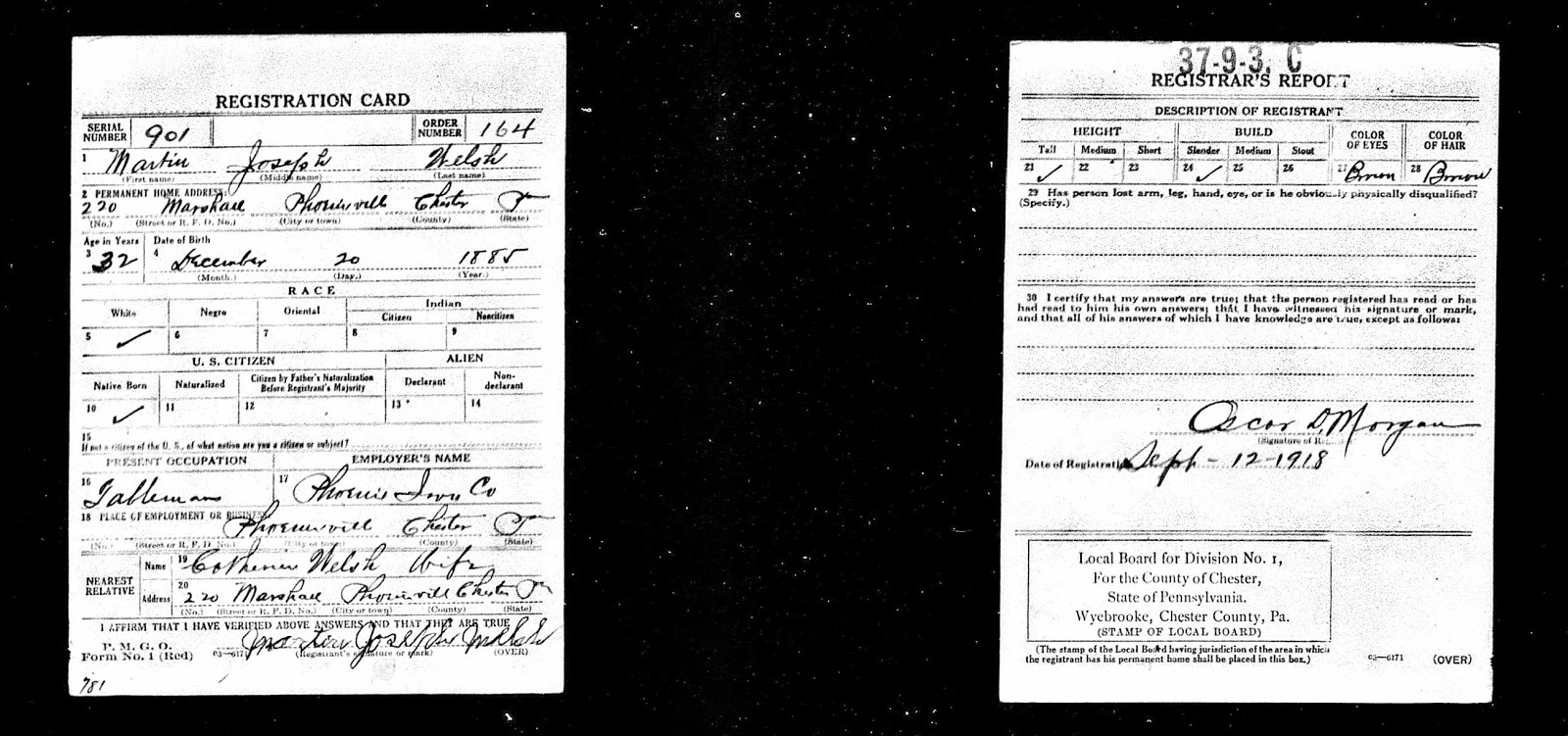Veterans' Day is a day to remember, appreciate and thank all the service members and their families who have served our country. The day got its start in November 1919, when - a year after World War I, known as "the Great War", came to an end - President Wilson proclaimed November 11 as Armistice Day. Today was known as Armistice Day for many years as people remembered the horrors and the heroes of the "war to end all wars" ... and then it happened again. We found ourselves in the midst of the Second World War.
In 1954 the wording was officially changed from Armistice Day to Veterans' Day. In addition the wording was changed from honoring those who fought in WWI to "honor American veterans of all wars." Today that has loosened up - though not officially - to honor all those who have served, including those in peace time. Each year the sitting President releases a Presidential Proclamation announcing Veteran's Day as a solemn legal national holiday.
The US ordered a Registration Draft in 1917/1918. Over 24 million men registered at this time. From a genealogical point of view, what a wealth of information! The registration cards include basic info like full name, address, nearest relative and occupation. It also includes date and place of birth; age; race, and country of citizenship; employer; a physical description including hair and eye color, height, and any markings or disabilities. It also included the address of nearest relative, dependent relatives, marital status, father’s birthplace, or previous exemption from service ,,, and a signature.
Above is my great grandfather's WWI Registration Card. The card shows that Martin Joseph Welsh was living at 220 Marshall Street in Phoenixville at the time. Phoenixville is a Borough in Chester County, PA. He lists his age as 32 and his birthdate as 20 December 1885. He is white and born here in the US. He worked at the Phoenix Iron Co. It looks like his occupation is Tableman.
An aside here: a tableman is a laborer at a blooming mill. The tableman is one of three men who supervise the rolling of steel. Three men - the tableman is joined by a roller and an engineer - stand together in an elevated box or workspace. The tableman grasps the levers that operate the roll tables, according to The Steel Workers by John Andrews Fitch.
Back to Martin! Not only does he lists his wife as his nearest relative, he names her! I have seen many registration cards where the men simply referred to their wives as "Mrs. insert last name here". Her address is naturally the same as his. And then ... his signature! Seeing his shaky signature leads me to believe that he himself did not fill out the registration card but was asked the questions and someone else filled it out.
The second side does not look like much at first glance. However this reveals that Martin was tall and had a slender build. He had brown eyes and brown hair. He had no disabilities or markings. His card was filled out in September of 1918.
The Draft Registrations of WWI is only one database that Ancestry.com offers. There are over 1,000 different military related databases included in the Card Catalog.
In 1954 the wording was officially changed from Armistice Day to Veterans' Day. In addition the wording was changed from honoring those who fought in WWI to "honor American veterans of all wars." Today that has loosened up - though not officially - to honor all those who have served, including those in peace time. Each year the sitting President releases a Presidential Proclamation announcing Veteran's Day as a solemn legal national holiday.
The US ordered a Registration Draft in 1917/1918. Over 24 million men registered at this time. From a genealogical point of view, what a wealth of information! The registration cards include basic info like full name, address, nearest relative and occupation. It also includes date and place of birth; age; race, and country of citizenship; employer; a physical description including hair and eye color, height, and any markings or disabilities. It also included the address of nearest relative, dependent relatives, marital status, father’s birthplace, or previous exemption from service ,,, and a signature.
Above is my great grandfather's WWI Registration Card. The card shows that Martin Joseph Welsh was living at 220 Marshall Street in Phoenixville at the time. Phoenixville is a Borough in Chester County, PA. He lists his age as 32 and his birthdate as 20 December 1885. He is white and born here in the US. He worked at the Phoenix Iron Co. It looks like his occupation is Tableman.
Back to Martin! Not only does he lists his wife as his nearest relative, he names her! I have seen many registration cards where the men simply referred to their wives as "Mrs. insert last name here". Her address is naturally the same as his. And then ... his signature! Seeing his shaky signature leads me to believe that he himself did not fill out the registration card but was asked the questions and someone else filled it out.
The second side does not look like much at first glance. However this reveals that Martin was tall and had a slender build. He had brown eyes and brown hair. He had no disabilities or markings. His card was filled out in September of 1918.
The Draft Registrations of WWI is only one database that Ancestry.com offers. There are over 1,000 different military related databases included in the Card Catalog.



Comments
Post a Comment